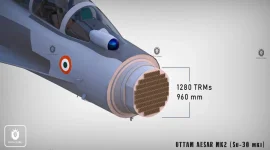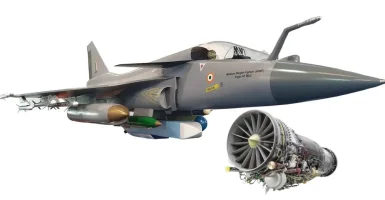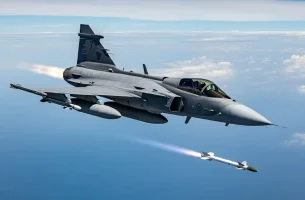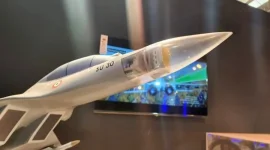- Views: 2K
- Replies: 15
As the world shifts its focus towards sixth-generation combat aircraft, the Aeronautical Development Agency (ADA) has strongly defended the continued development of India's 4.5+ generation Tejas Mk2.
Responding to critics who question the platform's relevance in an era of rapidly advancing technology, ADA emphasizes the Tejas Mk2's crucial role as a stepping stone and technology testbed for future indigenous fighter aircraft programs.
The Tejas Mk2, or LCA Mk2, is not merely another fighter jet; it represents a vital stage in the evolution of India's indigenous aircraft design capabilities. Building upon the lessons and technologies of the LCA Mk1 program, the Mk2 serves as a platform to refine and innovate before transitioning to more advanced systems.
By developing the LCA Mk2, India can implement and test numerous new systems that can later be integrated into the Advanced Medium Combat Aircraft (AMCA) and Twin Engine Deck Based Fighter (TEDBF) programs.
This approach significantly reduces the risks associated with future projects by ensuring new technologies are thoroughly tested and optimized on an existing platform.
With the LCA Mk2 serving as a testbed for foundational technologies, the AMCA program can concentrate on pioneering fifth-generation capabilities like stealth, supercruise, and advanced sensor fusion without being burdened by basic system integration.
Similarly, for the TEDBF, designed for naval operations, the systems perfected on the LCA Mk2 can be adapted to meet the unique challenges of carrier-based aviation, allowing developers to focus on naval-specific features.
Furthermore, introducing new weapons on the LCA Mk2 creates a testbed for integration, enabling faster adoption for future aircraft and shortening the development cycle for weapon systems on more advanced platforms.
Investing in the LCA Mk2 allows India to optimize its defence budget by spreading development costs across multiple platforms. It also provides a quicker return on investment, as the LCA Mk2 can enter service sooner and contribute to national defence while other projects mature.
Crucially, the project supports India's drive towards self-reliance in defence technology, fostering a domestic ecosystem of aerospace innovation vital for long-term strategic autonomy.
While acknowledging the global focus on sixth-generation capabilities, ADA argues that bypassing the 4.5+ generation would create capability gaps in India's immediate and near-future defence needs.
The LCA Mk2 aims to bridge these gaps by providing a modern, capable fighter that can be upgraded throughout its service life, potentially extending its relevance well into the era of sixth-generation aircraft.




